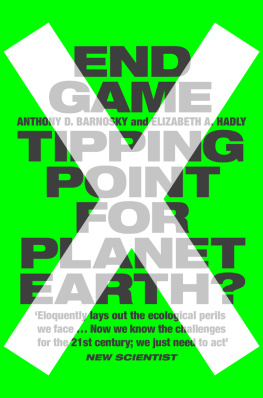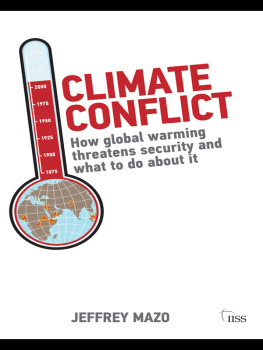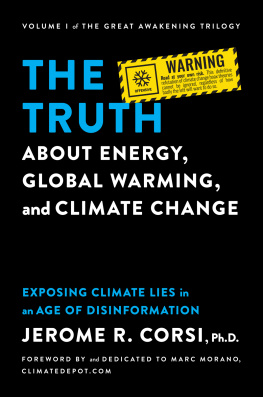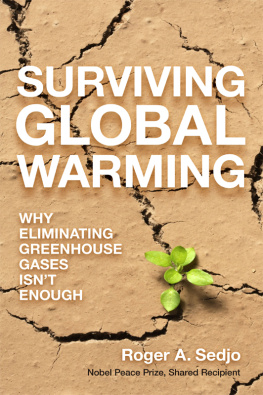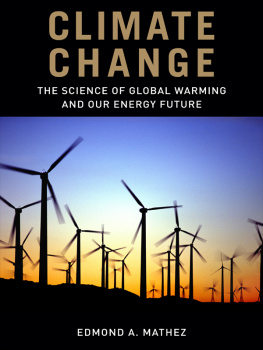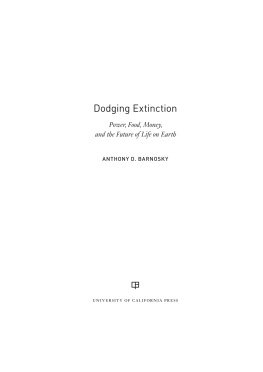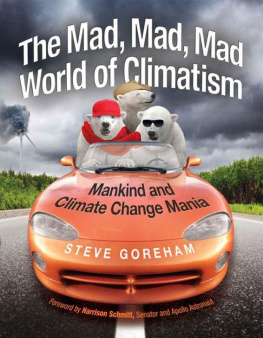Anthony D. Barnosky
Copyright 2009 Anthony D. Barnosky
All rights reserved under International and Pan-American Copyright Conventions. No part of this book may be reproduced in any form or by any means without permission in writing from the publisher: Island Press, 1718 Connecticut Ave., NW, Suite 300 Washington, DC 20009.
SHEARWATER BOOKS is a trademark of The Center for Resource Economics.
Design by Joyce C. Weston
Manufactured in the United States of America
To the 2010 graduating classes of Henry M. Gunn High School, Jane Lathrop Stanford Middle School, and Nido de Aguilas International School, and to young people of their generation everywhere. You have the talent, the power, and the responsibility to change the world for the better.
And especially to Emma and Clara.
Preface
IT IS no surprise that nearly seven billion of us (and counting) are redefining humanitys place in nature by replacing forests with houses, harnessing rivers for irrigation and flood control, turning deserts into farms and golf courses, moving mountains to find energy, and otherwise directly altering the worlds ecosystems. The surprise of recent years comes in realizing the potentially devastating ecological effects of a new human impact: global warming.
The concept of global warming is not entirely new, of course. The idea has been around for more than a century, and over the past 30 years, in fits and starts, it has made its way out of scientific journals and into policy debates and, at least when the weather seemed unusual, into the news. But not until 2006 did global warming migrate from the minds of scientists into the public consciousness on a broad scale. That year a floodgate opened, with books, movies, and innumerable news reports all recognizingmore than that, publicizingthat our climate really is changing and that people are causing it. With that recognition comes a shift from the if and why questionsweve essentially answered thoseto the how and what questions, especially: what does global warming mean for humanity and the rest of the worlds species and what can be done about it?
While economic repercussions, sea-level rise, melting glaciers, and paralyzed politics have received lots of press, only recently have scientists begun to get a handle on one of the most important and far-reaching effects: how global warming will change the ecology of Earth. Even seemingly innocuous conveniences that we take for granted, such as air conditioning and driving to the store, when multiplied by billions of people, are making our climate hotter than humans have ever seen it, and heating it faster than life on Earthhas experienced in millions of years, if ever. Couple that with ever-growing human populations and their needs and wants, and the ecological consequences promise to be profound. Will global warming be the coup de grce to many already-stressed ecosystems? Are we, in effect, setting up a perfect storm for the destruction of key ecological processes that have evolved to keep Mother Earth healthy and the human species alive?
In searching for answers to these and related questions, I found isolated scientific reports about effects of global warming on this species or that. But there was no comprehensive synthesis that focused on explaining the overarching importance of those effects, the real reasons behind them, and how unusual they may be compared to the kinds of longer-term fluctuationsover years, decades, lifetimesthat were used to. A critical question from my perspective as a paleobiologist was how, or even if, the kinds of changes were beginning to see today really differ from the normal ebb and flow that ecosystems experience as they persist over thousands, even millions of years. And, just as critical from my perspective as someone who finds solace in wild country, I wondered what the ecological changes triggered by global warming might mean for the nature preserves the world has long sought to protect, the kinds of places that I and millions of others seek to keep our spirits whole. So I decided to write this book, which addresses those questions and more, as a means not only to consider the kinds of ecological transformations we and, especially, our children will see, but also to ponder how those transformations will affect humanitys concept of nature, and how we can continue to keep nature alive.
Many of the examples I use to illustrate my points in the pages that follow come from places that I have worked and species I have studied personally, and for that reason mammals from awe-inspiring landscapes take the spotlight in most chapters. For the many other examples cited I have relied primarily on the published, peer-reviewed research of scientists from around the world. Their dedication of years of their lives to finding out how nature works ultimately makes this sort of synthesis possible.
Specific acknowledgments are in order for several people whohelped me as I was writing this book. I am tremendously grateful, more than words can say, to my soulmate and wife Liz Hadly, for the uncountable ways she contributed, among them: many impromptu brainstorming sessions, some at the weirdest times; feeding me relevant literature and news on a regular basis; being the resident expert on Yellowstone, mammalogy, and genetics; including me in thought-provoking classes she taught about the South American biota and on field trips to Monte Verde and Puerto Montt; educating me about salmon farming in Patagonia; critiquing the manuscript; and for her enthusiasm and support throughout this whole project. There is something of her in almost every chapter. Thank you Liz, for sharing your ideas, your scientific work, the good wine, and the hope of making the world a better place.
I thank Paul Ehrlich for passing the book proposal to Jonathan Cobb at Island Press, and Jonathan for his editorial help and for seeing the book through to publication. Researchers who read parts of the manuscript and provided helpful comments include Chris Bell, Rauri Bowie, Francis Chan, Chris Conroy, Todd Dawson, Inez Fung, Don Grayson, Larry Goulder, Rob Guralnick, Dale Guthrie, Liz Hadly, David Inouye, Brian Maurer, Craig Moritz, Steve Palumbi, Jim Patton, Mary Power, Terry Root, Bill Ruddiman, Steve Schneider, John Varley, and Jack Williams. Of course, any errors that may have crept in are my own.
For financial and logistical support during a sabbatical year when much of the writing was done, I thank the U.S.-Chile Fulbright Foundation and Department of Ecology, Pontificia Universidad Catlica de Chile, Santiago. I am grateful to Pablo A. Marquet and Claudio Latorre for hosting my visit at the Universidad Catlica. The National Science Foundation, especially programs in Sedimentary Geology and Paleobiology and Ecology, as well as the University of California Museum of Paleontology, contributed substantially to the financial support of my scientific research that helped to inform this book.


